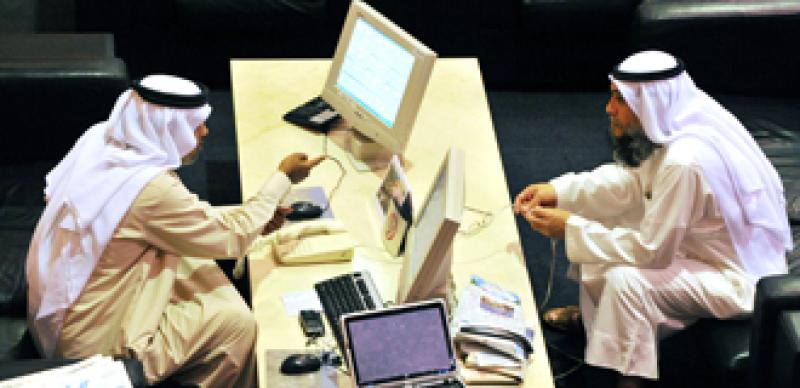As longtime horse owners and breeders, members of the royal families from the Gulf States and Middle East were well represented in the recent running of the Breeders’ Cup in Churchhill Downs. Among those present: Sheikh Mohammed bin Rashid al Maktoum, UAE Vice President, Prime Minister and Ruler of Dubai; Khalid Abdullah, the first cousin of King Abdullah of Saudi Arabia; Princess Haya of Jordan and Abdul Rahman al Jasmi of Global Banking Corporation.
Together they represent ownership of more than a dozen horses that ran. Between them they control some of the most significant businesses in Middle East frontier economies.
Handicapping the horses owned by the sheikhs and other Arab business leaders was a relatively simple decision. Handicapping the exchange-traded funds (ETFs) that reflect the Gulf States and the Middle East frontier economies may not be that easy.
Now that more investors are looking to diversify their portfolios in frontier markets in the Gulf States and the Middle East, a growing number of ETFs are being offered that provide access to companies in these markets. Included in the list are the following:
Van Eck Global's Gulf States Index ETF (MES)
WisdomTree Middle East Dividend ETF (GULF)
Invesco PowerShares MENA Frontier Countries (PMNA)
All of the ETFs have characteristics that are similar. They hold between 30 to 50 stocks. MES, for example, holds 60 percent in banks and financials, while technology and telecommunications represent 15 percent. The rest of its holdings are divided between real estate, industrial goods and services and utilities.

The aggregate market capitalizations of the ETFs range between $4 billion to $6 billion. And their exposure is dispersed among a number of countries. MES, for example, provides exposure to companies based in Kuwait, Qatar, Oman and UAE. PMNA provides exposure to Egypt, Jordan, Kuwait, Morocco, Oman and the UAE.
The attractiveness of these frontier market ETFs is that they focus on markets that are not strongly correlated to developed and emerging markets. Additionally, they are relatively sheltered from extreme market volatility by virtue of their location.
But the appeal of these ETFs may also be their weakness. Most of the ETFs are heavily concentrated on financials and banking, traditionally slow growing sectors. And although many of these stocks are performing strongly, and their stocks prices are up, the share price and net asset value (NAV) of all these ETFs are well below their initial benchmarks.
Ultimately, the primary criteria for any investor in evaluating overseas-related ETFs - especially in the frontier and emerging markets - should be how accurately the ETFs reflect the economies they are connected to. When all is said and done, the Gulf economies are driven by energy. And none of the existing ETFs fully reflect the energy components of the Gulf and Middle-East economies.
Investors need to tap into the dynamism of frontier economies, especially because of their growth potential and their strategic value. But the returns from ETFs such as MES, GULF and PMNA are longer term. For investors looking to short-term plays in the Gulf and Middle East frontier markets individual stocks focusing on energy may well be the answer.






